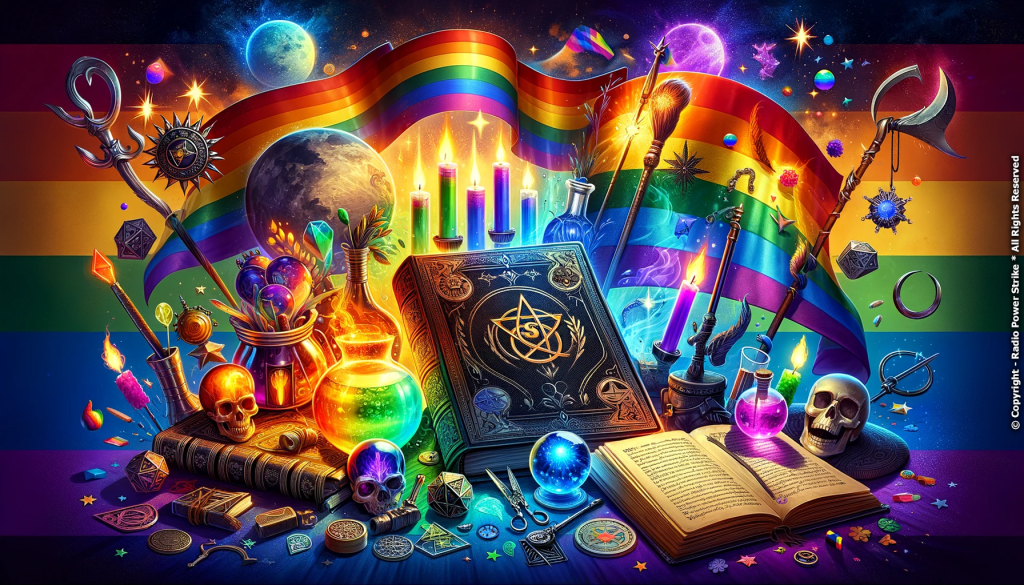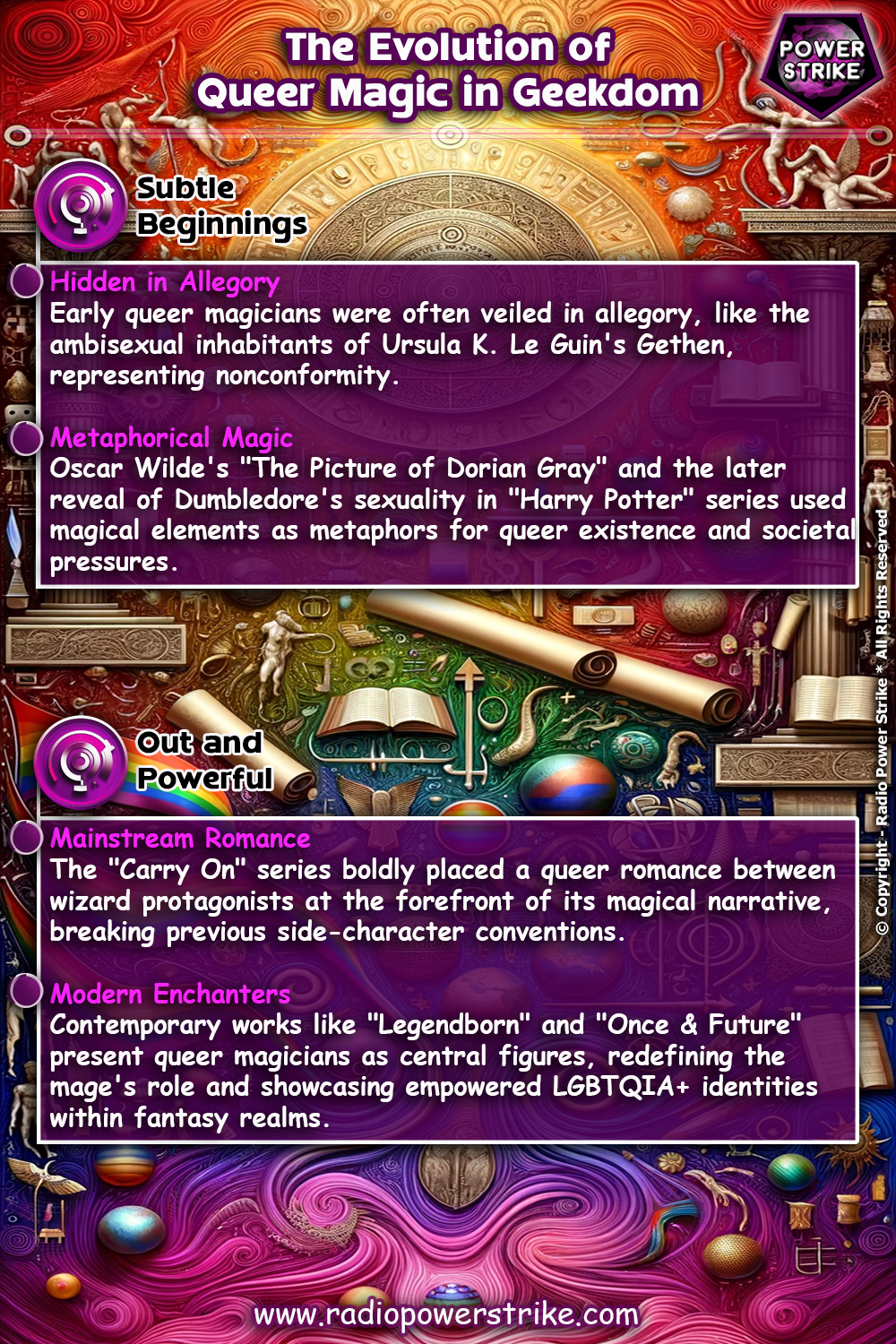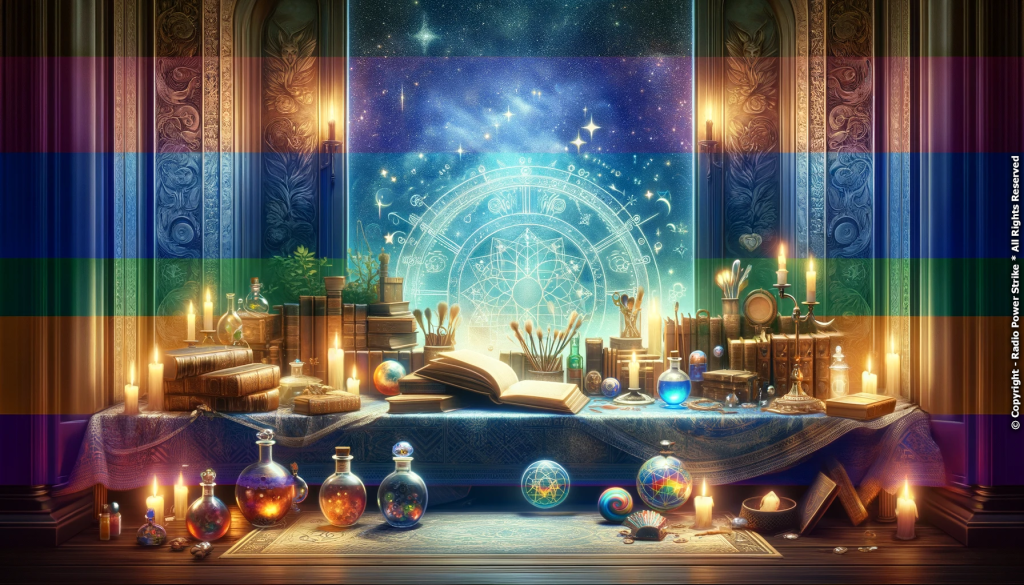Queer Wizards and Witches: Magic in the Realm of Geekdom
The Evolving Role of LGBTQIA+ Spellcasters in Popular Fantasy

Magic, in its many forms, has long been a conduit for tales of empowerment, self-discovery, and transformation. Yet, in the realm of geekdom, the portrayal of queer wizards and witches provides an additional layer of complexity and resonance. From the subtle undertones of yesteryears to the unapologetic depictions of today, the journey of LGBTQIA+ magic users mirrors the broader evolution of queer representation in media. This exploration delves deep into their enchanted world, spotlighting their significant impact on popular fantasy.
Hidden Enchantments: Early Queer Subtexts in Magic Lore
Historically, the portrayal of queer magicians was nuanced, often cloaked in allegory and subtext. Their identities were suggested, leaving much to the imagination and interpretation of astute readers and viewers.
For instance, in Ursula K. Le Guin’s “The Left Hand of Darkness”, the inhabitants of planet Gethen are ambisexual, shifting genders, a portrayal that defies binary norms. This unique form of magic provides commentary on fluidity and non-conformity.
In “The Picture of Dorian Gray” by Oscar Wilde, the magical portrait and Dorian’s eternal youth serve as metaphors for the societal expectations surrounding beauty, morality, and the hidden nature of queer desire during Victorian times.
J.K. Rowling’s “Harry Potter” series, although not explicit in the text, would later reveal Dumbledore’s homosexuality, hinting at deeper layers beneath the wizard’s wise demeanor and past relationships.
Spellcasting Out of the Closet: Bold Queer Representations
The turn of the century witnessed a renewed spirit, with queer wizards and witches stepping into the limelight, embracing their authentic selves and roles in narratives.
Take the “Carry On” series by Rainbow Rowell, which showcases a tumultuous romance between its wizard protagonists, Simon and Baz. Their relationship is central, exploring themes of acceptance, love, and magical rivalry.
In the world of television, “The Chilling Adventures of Sabrina” on Netflix introduced queer witch characters like Theo Putnam, addressing gender identity amidst witchy escapades and dark arts.
“Once & Future” by A.R. Capetta and Cori McCarthy presents a retelling of Arthurian legends with a queer twist, embedding both magic and LGBTQIA+ identities seamlessly into the story.

Empowerment Through Enchantment: The Current Landscape and Beyond
The contemporary fantasy realm is marked by richer narratives where queer magic users are not just side characters but influential figures driving the story forward.
“Legendborn” by Tracy Deonn introduces a queer Merlin figure, showcasing a reimagined tale of the Arthurian mage with a fresh, inclusive perspective.
The increasing prominence of diverse voices ensures a broad spectrum of representation. From non-binary spellcasters to trans witches, the magical universe now reflects a wide range of experiences, identities, and tales of empowerment.
Books, shows, and movies are increasingly weaving these diverse stories, and platforms like Netflix’s “Shadow and Bone” or the “Witchlands” series by Susan Dennard showcase multifaceted queer characters within intricate magical worlds.
The world of geekdom, with its rich tapestry of magic, offers a space where identities can be explored, celebrated, and redefined. The queer wizards and witches of today are not mere characters in a story but emblematic of society’s evolving understanding and acceptance of diverse identities. As fantasy continues to push boundaries, the tales of these LGBTQIA+ spellcasters serve as both a reflection and a beacon, illuminating the path toward a more inclusive and magical future.


Comments are closed, but trackbacks and pingbacks are open.